IN ORDER TO STABILIZE AND MAINTAIN THE EMPIRE THEY SOUGHT TO SPREAD OVER THE EARTH, IT WAS IMPERATIVE TO STUDY, CONTROL, AND MODIFY THE TROPICS.
BETWEEN THE TROPICS: THE GENEALOGIES OF THE EMPIRES AND THE REVOLUTIONS
ENTRE LOS TRÓPICOS: GENEALOGÍAS DE IMPERIOS Y REVOLUCIONES
By
Ye Liu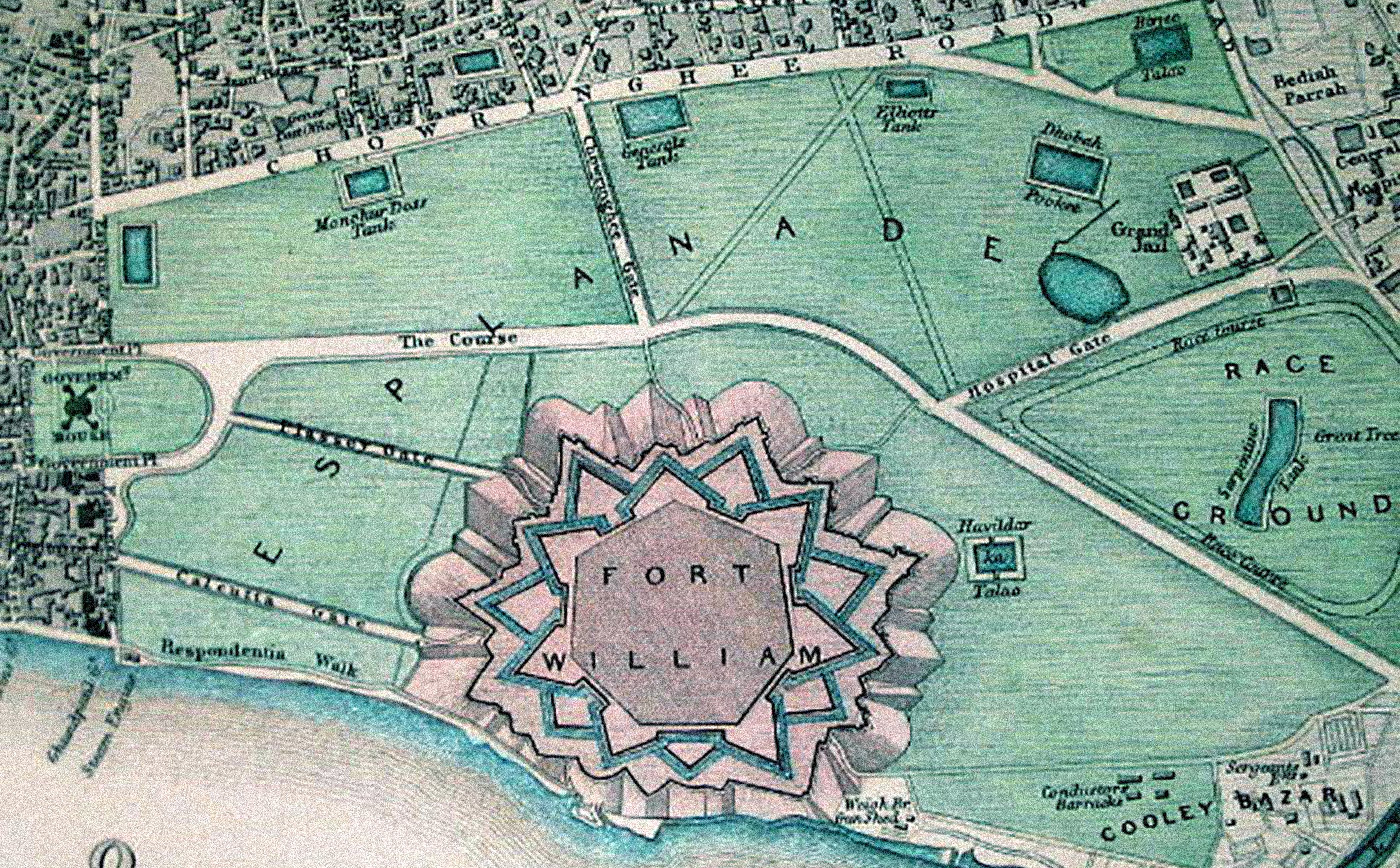
01
It bears repeating that the «tropics», the «(global) south», the «Third World», and the «(former) colonies» tend to refer to overlapping geographic areas. That is to say, the lion’s share of the land designated the «south» and the «Third World» is also identified with the tropical climate. In fact, the words «tropics» and «colonies» were used interchangeably in European records up until the 1950s. The discovery and delimiting of the tropics, a task that went on for several hundred years, took place after the Enlightenment and was closely connected to the Age of Discovery, and the rise of modern science, colonialism, and capitalism. It was through this process that the «tropics» was defined and naturalized. The Chinese character dai, meaning region or belt, which appears in the Chinese term for the tropics, redai, has no relation to the English word «tropics», or the German term, «Tropen», both of which are directly related to meteorology. Yet this character gives the Chinese term the graphic connotation of a region or zone encircling the earth. As such, the translation reflects the nascent conception of the world as a globe at the end of the Qing Dynasty when Western geographical concepts were imported to China.
Whereas continents and seas have clearly distinguished visual and physical boundaries, climatic zones are created by longitudinal distinctions on a planetary level. This concept was predated by the meridian—for example, the Tordesillas meridian was established at the turn of the 16th century by emerging naval powers Spain and Portugal to define their spheres of influence. But the meridian was an empty concept; like Cartesian geometry, it was only a self-referential projection, devoid of meaning or narrative, and interchangeable with other concepts. Climatic zones, on the contrary, have a material basis. They are localized, designable, appearances and characteristics. It is indisputable that differentials exist in the earth’s temperatures and their distributions, but the spectrum of difference is gradual and complex. Herein lies the truth of the matter: the «tropics» were the first climatic zone to be invented. That is, the colonial project problematized the climate. Europeans defined the foreign land before them as the tropics, distinguished from the metropoles, which were given the appellation «temperate zones». Climates in this sense were ranked: «Temperate» also connotes the mild, suitable, and well-disposed. Discovering that a transitional zone existed between the temperate zone and the tropics, they simply named it «subtropics». As arctic exploration came into vogue, this too was folded into the same organizational scheme.
With climatic designations, we could get a hold of the earth; every foot of land on the planet could be given a basic attribute. Climate became the basis of understanding animals, vegetation, landscape, and populations. In the 18th century, a kind of climate determinism greatly shaped the worldview of Europeans, and has remained popular ever since. Climate determinism not only essentializes the differences between spaces, but also locates them in a temporal sequence. In popular understandings of the theory of evolution, life in the tropics evolved with delay and lethargy. For industrial societies, these theories even provided an ancestral fantasy as primitive, pastoral images became profoundly associated with the tropics.
In The Tropics of Empire, Nicolás Gómez describes Columbus’s obsession with the Caribbean. To Europe, the tropics replenished the supply of urgently needed goods, including animals, plants, and slaves (populations). This seafarer had discovered a huge reservoir of resources. The subjugation of the Caribbean, the West Indies, Latin America, Southern Asia, Southeast Asia, and Africa refined colonial—and specifically tropical—ruling technologies that were foundational to the rise of modernity and modern governance. The tropics were objectified as both a place and an epistemology.
The basis for the expansion of colonialism throughout the tropics can be found in the origins of political economy. Colonialism provided a complimentary supply of raw materials, labor power, and precious metals that formed a unified whole with the temperate zone, so long as the tropics remained subordinate. In this era, going deep into the tropics was considered a form of adventure. Most Westerners would only set foot in the ports or along the coastline; only a few explorers or missionaries ever made sporadic incursions into the interior heartland. Mary Louise Pratt’s Imperial Eyes discusses the importance of the genre of colonial travel writing. Faced with the vitality, richness, and intensity of the tropics, many early explorers, missionaries, seamen, and merchants fell back on a kind of primal terror when describing their experiences.
The panic was not simply rhetorical. Calcutta, once the headquarters of the East India Company and capital of colonial India, was shaped precisely by this fear and anxiety. To the Englishmen who had just arrived, the tropics were a malady that needed to be overcome. Even the lush vegetation posed a threat. Fort William, located at the center of Calcutta, was the first stronghold established by British colonists. To its south was a large swath of jungle, and after being attacked in that area at night by several native groups, the British decided to completely level the jungle to ensure unobstructed visibility and prevent their attackers from drawing near. Years later, this artificially cleared area became the first modern municipal garden in Asia, including a popular racetrack, making Calcutta the empire’s City of Joy.
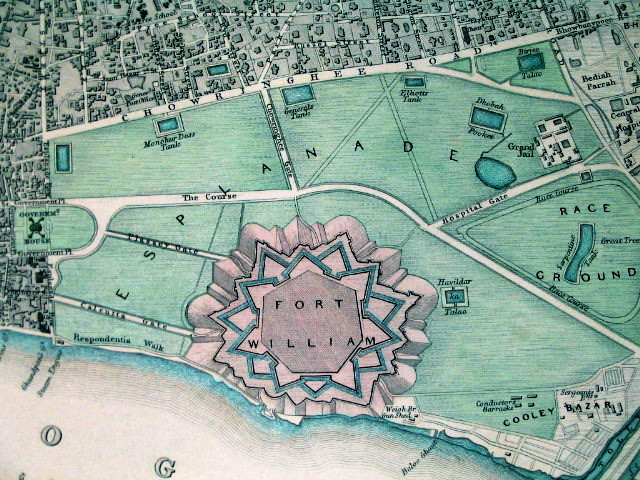
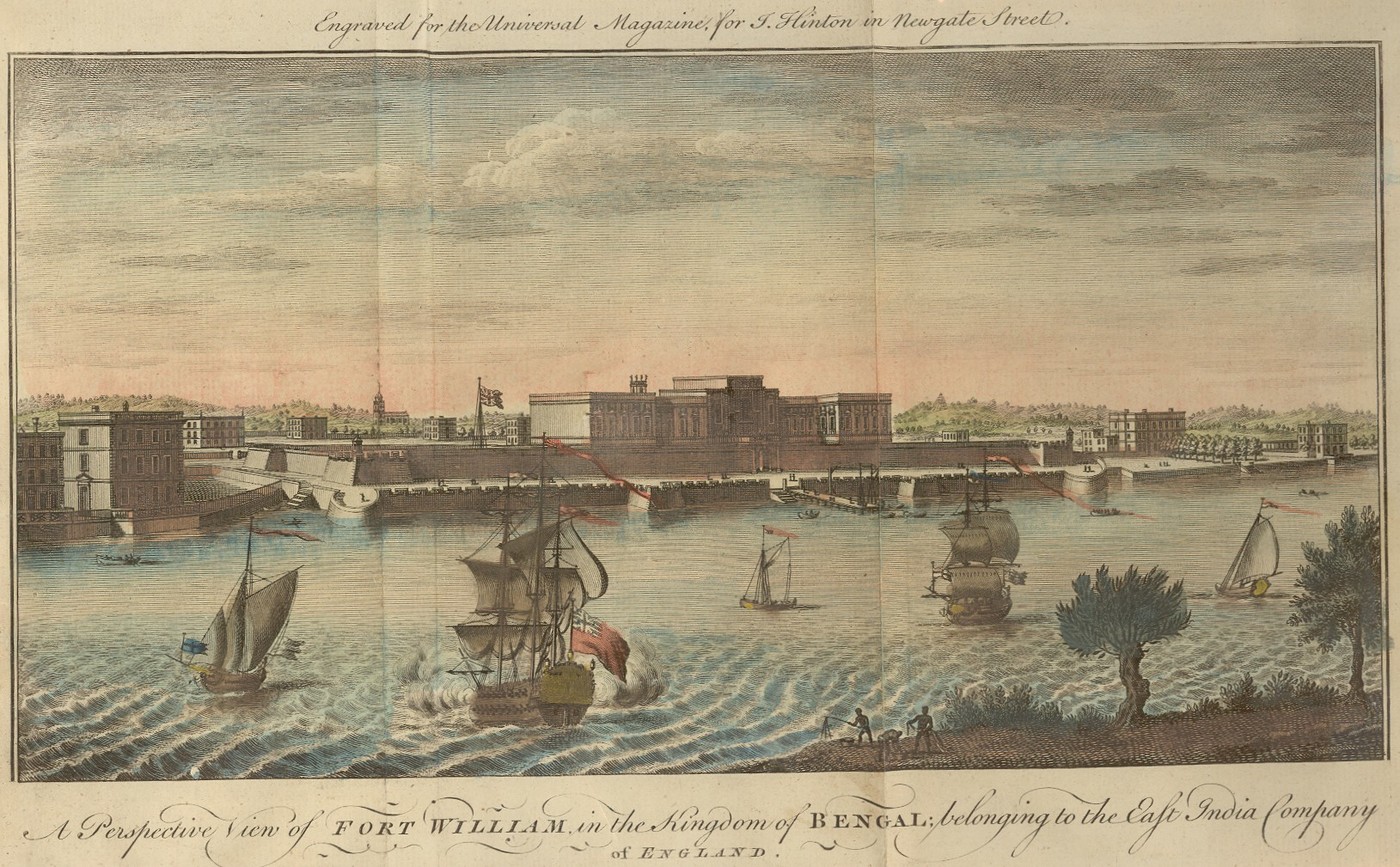
In truth, the operation of the tropics has been an enduring industry ever since the creation of the East India Company by England and Holland in the 17th century. The Indian subcontinent, almost all of which is classified as tropical, was the most important British colony. Calcutta was selected as the capital due to its geographical location in relation to the continent and the ocean, later becoming the center of the imperial sprawl from the Gulf of Aden to George Town, Malaysia. Calcutta was the most important city of the empire, second only to London, and therefore referred to as the Second City (which in addition to its other nicknames City of Joy and City of Palaces, demonstrates the importance of the metropolis). Unfortunately, Calcutta had no direct access to the sea; unlike other sweltering cities, there was no ocean breeze to cool it. As such, its climate is similar to that of Guangzhou. When the rainy season came down upon the city, the colonial administrators laid bare-chested in their mansions, resting on bamboo beds while their servants fervently fanned them—it was too hot to do anything else. How to deal with the tropical climate was a common challenge for European colonists occupying Africa, Southern Asia, South East Asia, and South and Central America. In order to stabilize and maintain the empire they sought to spread over the earth, it was imperative to study, control, and modify the tropics. As a result, the tropics became a special site of inquiry wherefore emerged the modern disciplines of botany, agriculture, architecture, and medicine, among many others.
02
As an international, inter-regional, and inter-continental classification, the climatic zone is in some sense the largest classification unit still in use today. Only a few zones are needed to encompass this entire planet, with no corner uncategorized. The classifications exceed other European institutions of geographical categorization, such as the Treaty of Westphalia and Grotius’s International Law. Climatic zones operate on another plane, where the earth is the epistemological subject of an emerging global consciousness. The fields of sea navigation, cartography, surveying, and astronomy began to prove that the earth is completely knowable.
The tropics were host to the largest and most enduring of colonies that were the last to become independent, which had completely reoriented capitalism’s ties to modernity. We are forced to recognize that there is no linear progression from capitalism to colonialism, then to imperialism. Within a certain spatial and temporal frame, colonialism can stimulate the growth of capitalist power in the metropole, creating new conditions, industries, regulations, social groups and classes. Many new phenomena arose from the asymmetrical relationship between domestic and overseas territories. Sidney W. Mintz’s Sweetness and Power explains how overseas plantations rejuvenated trade in London and created a new social class. The new class was not formed domestically, but emerged from political and economic relations to the distant colony in an international network. Mintz declares that capitalism began in the plantations. Ann Stoler confirms it in her search for historical remnants of labor, gender, race, and class on a Sumatran plantation. One could say that the tropics were a laboratory or petri dish for modern capitalism. Nation states, race, ethnicity, population, class, law, and techniques of governance—the principal tools of modern capitalism were exercised in the tropics before being imported back to Europe. Europeans saw themselves in the mirror of the tropics and used it to justify their own standing.
As an integral part of empire, the tropics provided a kaleidoscopic index. Divorced from local forms of knowledge, an area occupying 40% of the earth’s surface was entrapped to become the host of colonial capital. Labeling one swath of the world the «tropics» was a way for Europe to define a zone with a categorically different climate and culture from its own, a project to assign a single identity to a vast region. The word began circulating as an adjective—tropical diseases, tropical fruit, tropical agriculture; the tropics were reduced to a single word with a unified set of characteristics. But have we ever heard of the term «temperate ___»? Far from being unified under a single geographical distinction, the temperate climate zone is regarded as heterogeneous, diverse, living, and divided into many states.
Consider the six sculptural reliefs of tropical insects on the gate of the London School of Hygiene and Tropical Medicine, the global center for the study of tropical medicine (the school’s crest features a palm tree). The tropics here are a visible concept with multiple demarcations. Rather than being understood through the actual lives, bodies, everyday practices and relationships between humans, objects and the environment, the tropics became an abstracted, scientifically examined subject, existing within the bourgeois worldview and epistemology concerned only with social reproduction. In 1870, only 10% of the African continent (mostly coastal) was controlled by colonial powers. By 1910, that number grew to 90%, largely as a result of the 1885 Berlin Conference. Lenin described that process of dividing and parceling land as the arrival of the Age of Imperialism over every inch of land. It was the end of John Locke’s terra nullius, for there was no more space on the map left without designation.
Decorations on the exterior of the London School of Hygiene and Tropical Medicine
03
But history has a tendency to develop their inverse. As soon as the tropics were attributed entirely to empires, another spatial variable was accelerating into existence. During World War I, also known as imperialism’s civil war, Lenin struck out from the frail core of Tsarist Russia, igniting a long-fermenting revolution like a strike of lightning. Since withdrawing from the war, Soviet Russia took a huge swath of Eastern Europe and Northern Asia out of the imperial order, creating alternative organizational forms as the avant-garde of the Age of Empires. A new program of modernity, intended to replace the global imperial order, was presented to the colonies and their peoples.
Combing through postcolonial histories, Robert J. C. Young claims that «Communism was the first, and only, political programme to recognize the interrelation of these different forms of domination and exploitation and the necessity of abolishing all of them as the fundamental basis for the successful realization of the liberation of each». 1 In 1920, the «Colonial Question» as a global political program was presented for the first time to the Second Congress of the Communist International». Communists began to recognize that victory over empires could not be won by the working class in industrialized countries, but also depended on the liberation of the colonies. The fierce debate waged between M. N. Roy, representative of colonial India, and Lenin at the Congress is regarded as the moment when colonial revolutionaries rose to the forefront of history.
If the spread of colonial empires enabled the creation of the tropics, then the history of 20th-century revolutions was a process of negation by which the tropics established their independence. As European empires declined during the Cold War precipitated by World War II, revolution grew at an unprecedented rate. The 1950s saw the popularization of the term Third World. Coined by a French demographer, the term originally referred to the (former) colonies that had suffered profound oppression and were in a «third position», that is, unaligned with capitalism or communism. But following the Bandung Conference, the Suez Crisis, and especially the Algerian War, the Third World became radicalized and formed a clear self-identity and political disposition. For the first time, the oppressed were setting their own agenda.
After a long string of fragmented, scattered, and stifled expressions since the beginning of the 20th century, the tropics were finally establishing a collective voice with clear reverberations. In contrast to the subjugated and parceled tropics that existed under imperialism, this time the tropics were unified around the identification with resistance and autonomy. An umbrella term that had been used to erase difference was transformed into a new instrument of solidarity. Revolution as a way of life prevailed in the Third World, and the tropics became its boiling center.
From the 1950s through the 1980s, the tropics fought hot wars in a world shaped by the Cold War. The Malayan Emergency, the Battle of Dien Bien, the revolutions in Cuba and Zanzibar, the Congo Crisis, the Angola Liberation War, the Mozambique Liberation War, and the Vietnam War connected the entire region on the frontline of revolt against empire, setting wild fires all across the tropics. The evolution of this subjectivity was not unexpected, for it represented the struggle from a position put forth by the socialist international project in its fight against the global capitalist order. It was an era on fire. The Cuban line of struggle argued that the resistance needed more Vietnams. Spreading the battlefields would systematically dismantle the empires as the cost of war became unbearable. The tropics were not simply the site of conflict, but also provided tactical necessities. The dense vegetation became a thicket of insurgent rebels. American postwar military theories of counter-insurgency and low intensity warfare were born out of tropical conflicts. Whether as a source of warmth or a provider of sustenance, the heat brought the fighters closer to nature.
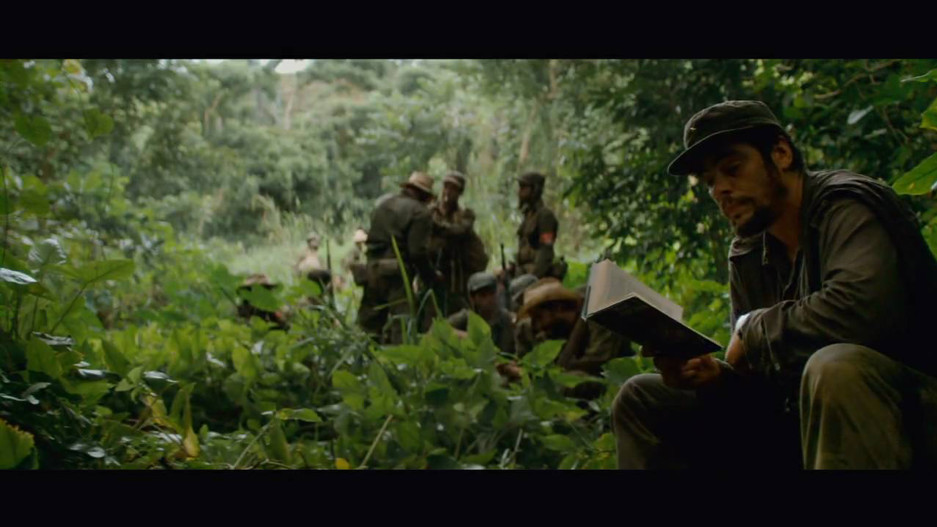

04
By spreading the conflict over a vast area, these revolutionaries made guerilla warfare possible. When the Third World rose up in uprisings, it was not based merely on local resentments and outrage. After a string of victories in China, Algeria, Cuba, and Vietnam, guerilla warfare had solidified into a revolutionary strategy. As a philosophy of victory, it was rooted in the temporal frame of modernity and spatial logic of internationalism. The political disposition of guerilla tactics is clarified as anti-imperial resistance. An ocean of insurgency, the tropics inversed the topology of colonial subjugation, becoming the frontline of a global revolution and its theoretical underpinnings like a shifting wind directs a raging fire. Let us not forget that in the writings of Carl Schmitt and Mao Zedong, guerilla warfare is rooted in the land. It is also a process of reconfiguring local knowledge and experiences in the tropics. By relying on, using, and awakening to the land, the relationship between the land and its inhabitants was given renewed strength. For the first time, «the Nomos of the Earth» was dictated by the agenda of the oppressed, whose resistance manifested in the battle over the ownership of tropicality. As an imperial construct, the tropics had to find their own spirit, write their own narratives, and establish their own position in the world. The goal was not to return to an idealized pre-colonial vision of separation and innocence. On the contrary, it was to stake a claim to the colonial legacy, to reconfigure demands by appealing to transcendent demands, and to carry out local transformation and revolution in the context of international solidarity.
As a new geographic bond, the tropics connected post-colonial regions to a socialist worldview. The emancipation of the tropics began with the refusal to essentialize itself. Fantasies of primitive, pastoral farming villages were abandoned, and the region was pitched into the hurricane of modern productivity. This was not at all collusion with capitalism, the «mirror of production» that Baudrillard fears. On the contrary, colonialism was never truly invested in homogenizing the tropics; manufacturing and controlling difference was the foundational demand of imperialism and capitalism. Lenin’s 1913 description of an «Advanced Asia» was mirrored in China’s call for an «Advanced Africa» during Zhou Enlai’s tour of Africa in 1964. Referring not to an actuality, the «advanced» points to a belief that those at the extremes of the old world could be a force of negation causing massive global turmoil and a pioneering impetus for the creation of a new world. «Advanced» is a future-oriented dialectical projection informed by revolutionary modernity. Socialism’s involvement in the Third World was motivated by the geopolitical logic of anti-imperialism and anti-colonialism, whose most basic sensory and material conditions were found in the tropics. The tropics posed an unknown challenge, as can be seen from the huge influxes of large-scale material and technical support that were invested.
The tropics were the first «foreign land» practitioners of socialism encountered, with a fully unexpected suite of geography, soil, temperature, rainfall, sunlight, insects, and fauna. During the Mao era, Chinese engineers spent more than a decade working to adapt architectural designs to the tropical climate of Africa. Before the communist era, the significance of the colonies to communists was mostly derived from studies of political economy. From Eastern Europe to East Asia, no nation had a systematic understanding of the tropics, for it was a category of knowledge that belonged to colonial empires. How to make sense of the tropics in the context of global revolution was both a material and a philosophical question. For a revolution claiming to be universal, the socialist world saw the tropics as the last puzzle piece in its approach to nature, technology, and populations. It was only then that they truly confronted the region. During the Cold War, socialists went through a process of learning about the history of the tropics under post-colonialism. The alliance between the socialist camp and the Third World could very well have been an attempt to rethink and rewrite the tropics—to redraw the world map and imagine a new global order through a new take on political economy and epistemology.
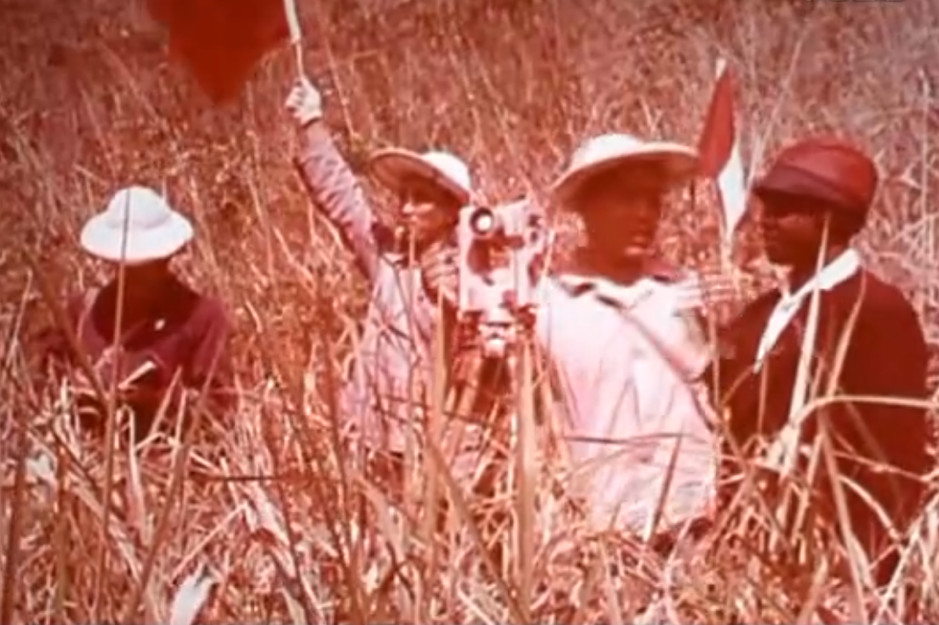
In this regard, the tropics themselves were a method, a regionalized epistemology. Entangled in colonial, anti-colonial and post-colonial conditions, the tropics were a symptom of coloniality that carried the potential for revolution from within. The question of how to understand and attend to the tropics was indispensable to understanding colonialism, the Third World, and the global south. In this revolutionary zone defined by geographical features, history unfolds along a latitudinal axis that incorporates various political categories by correspondence and substitution. During the Mao era, a powerful rhetoric of romanticizing of the tropics was evident both in works of revolutionary art (such as Ode to Friendship, The Battle Drum at the Equator, Songs for the Construction of the TAZARA Railway, and In the Jungles of Africa) and in popular discourse. The tropical landscape was depicted as vast, powerful, robust, honest, passionate, and radical. It was also a site of hardship, tribulation, unadorned life, and personal growth. That is to say, the tropics were revolutionary and enabled the formation of revolutionary subject, a geographic signifier that could produce consciousness and dialectics. This is why Africa was referred to as «the tropical continent» and «the revolutionary continent», in Chinese discourses at the time.
This new understanding of the tropics hinted at the possible disintegration of the old order: the liberation of a region named after a physical geography category cannot but overhaul its physical attributes and associated political particularities. The knowledge of the tropics, integral to colonial history, had no place on the continent. Knowledge that had been accumulated and refined by practice over thousands of years was obscured, rendered obsolete and meaningless. Knowledge would no longer be organically integrated in the world; natural elements were no longer connected to any other type of knowledge. And the people lost their place in the production of knowledge through constant dispossession and expropriation, lost their ability to interpret the earth they lived on and became an excess population. The fact of their abduction as slaves echoes their epistemological banishment.
The reconstruction of the tropics necessitated a new way of knowledge production that could endow a character to the land. This geographic character was not meant to represent any particular locale, but to enable wide recognition of local conditions as interchangeable, shifting, interlinked, and mutually contextualized. The revolutionary imagination of the tropics was an important mechanism of internationalism, whereby theory-inflected experience and imagination could transcend spatial and temporal localities to create a shared destiny and common conditions. As Ché Guevara said in 1964, problems in the Mississippi could only be straightened out by straightening out problems in the Congo—«the same warmth and cold throughout the globe».
×
Liu Ye
NOTES
Between the tropics: the genealogies of the empires and the revolutions, by Ye Liu, first published at South of the South Journal AVAILABLE HERE
Published with the permission of the author.
- Robert J. C. Young, Postcolonialism: An Historical Introduction (Wiley-Blackwell, 2016), 142.
